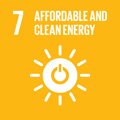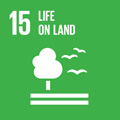- Docente: Giorgio Gasparotto
- Credits: 8
- SSD: GEO/06
- Language: Italian
- Teaching Mode: Traditional lectures
- Campus: Bologna
- Corso: First cycle degree programme (L) in Geological Sciences (cod. 8015)
Learning outcomes
The students will learn the foundamentals on the science of
mineralogy. Main goal are: -knowledge of structures, crystal
chemistry and classification of minerals; - identify rock-forming
minerals, their physical properties, occurrences; -introduce
analytical methods like x-ray diffraction and polarizing
light microscope; identify mineral in hand specimen and thin
section.
Course contents
Definition of mineral. Chemical bonds in solids and crystals, ionic
radii, coordination of ions, Pauling's rules. Description of
crystal structures: sulphur, graphite, diamond, halite, fluorite,
layered structures (brucite, gibbsite), calcite. Structural
classification of silicates. Solid solutions, binary sistems,
crystallisation diagrams. Polimorphism, phase rules.
Elements of crystallography: point group symmetry, stereographic
projection of crystal models. Bravais nets, space groups.
Physical properties of minerals: specific gravity, hardness and
Mohs's scale, fracture, cleveage, piezoelectricity, magnetism. The
colour of minerals and precious stones.
X-rays and their applications: Bragg's law, powder
diffraction.
Optical properties of minerals.
Systematic description of rock-forming minerals: olivines, garnets,
micas, pyroxenes, amphiboles, feldspars, silica minerals,
carbonates.
Mineral genesis and occurrences.
Readings/Bibliography
C.K. Klein, A.R. Philpotts - Mineralogia e petrografia, Zanichelli 2018.
C. KLEIN - Mineralogia, Zanichelli 2004.
C. KLEIN - Mineral Science, Wiley.
D. Perkins - Mineralogy, Prentice Hall.
W.A. Deer, R.A. Howie & J. Zussman - An introduction to the
Rock-Forming Minerals. Longman Scientific & Technical
Optical mineralgy
A. PECCERILLO e D. PERUGINI - Introduzione alla petrografia ottica, Morlacchi editore.
W.D. NESSE - Introduction to mineralogy, Oxford University Press.
Teaching methods
Lectures and laboratory exercises
Assessment methods
The exam is written.
Teaching tools
Specimens of minerals and rocks
Models of crystals and structures of minerals
Optical microscope and thin sections of minerals and rocks
Software for visualisation of crystal structures
Office hours
See the website of Giorgio Gasparotto
SDGs



This teaching activity contributes to the achievement of the Sustainable Development Goals of the UN 2030 Agenda.
